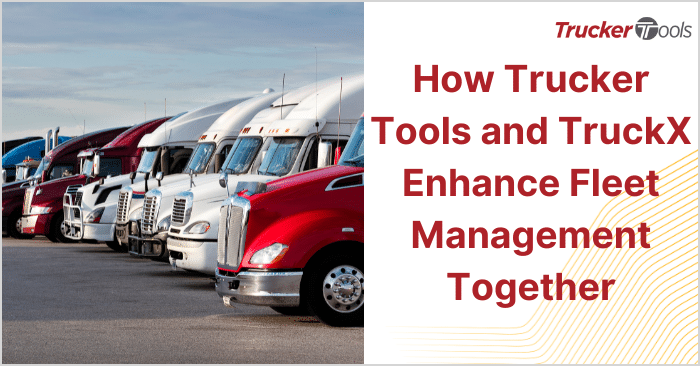Trucker Tools recently hosted a webinar, As Freight Comes Roaring Back, Are Brokers and Their Technology Ready?, featuring Craig Fuller, founder and CEO of FreightWaves, and Trucker Tools’ own CEO and founder, Prasad Gollapalli. In the webinar, we discussed where the freight brokerage market is right now and what to expect for the remainder of 2020. As part of the discussion, we examined Q3 trends and changes, offered market predictions based on SONAR data and considered why now is the time to advance your brokerage’s technology capabilities. In this blog, we share highlights from the webinar, as well as key insights that you can use to prep for 2020 peak shipping season and beyond.
The Current State of Freight Brokerage in Q3
“It’s pretty obvious if you’re in the market, if you’re on the freight brokerage side, it’s harder to find spot capacity,” said Fuller. “It’s very difficult in this market to find available capacity simply because there’s so much freight moving through the system that there just isn’t enough available capacity.”
As FreightWaves recently reported, capacity across the transportation industry is at historic record lows heading into what is going to be a brisk and likely tumultuous peak shipping season. Tender rejections are at record highs, which puts both spot rates and contracts rates under pressure. Capacity favors the best opportunity in the market and carriers are being more discriminating about the freight they’re taking because they have more options. But that’s not all there is to the story. Fuller explained why larger, high-volume shippers are playing such a big role in surging volume and the current capacity crunch.
“The larger, high-volume shippers have actually played a much bigger role in this market than in years previous,” reports Fuller. “The shippers that are doing exceptionally well are in markets where they have logistics networks where they can get stuff to your house. If you think about the companies that have those networks, they tend to be large, enterprise-based shippers. They’re the ones who are able to respond and adapt in this market. This is a recovery led by the bigger shippers in the freight market and it’s a recovery where freight is making up a greater percentage of the economy than it has in years past.”
What’s Ahead for Brokers/3PLs in Q4
Historically, 40 percent of all retail sales typically occur in Q4 and retail generally has an outsized impact on Q4. With the COVID-19 pandemic, consumers are not spending as much of their money on going to events and restaurants. They’re largely staying close to home and thinking more about their lifestyles at their physical homes, which is why home improvement-related purchases have been so big this year. During the pandemic, consumers are buying a lot of physical goods and physical goods are what move freight — and that demand is not going to decrease in Q4, according to Fuller.
“We’re not going to get any relief in terms of capacity in the near term,” said Fuller. “I think this is going to be one for the record books. I don’t think we’ve seen anything like this and even with what we’ve seen over the last couple of months, I think we’re just going to see that much more demand.”
According to Fuller, some of the broader volume increases during peak shipping season will be driven by freight coming into ports across the country.
“I think it’s going to be a peak that is unlike any other because we’re seeing that 25 percent tender rejection rate is so much higher than we’ve seen it and we haven’t even entered peak yet,” said Fuller. “We should see some acceleration of tender rejections going into peak, simply because there’s so much retail freight that has been on the water and is coming into ports now.”
Why Now Is the Time to Add Technology to Your
Operations
With bigger, high-volume shippers taking a bigger portion of the market share, brokers and 3PLs must be able to offer the digital connectedness and software integrations that these shippers require. Fuller believes that logistics businesses that focus on improving how they do business (i.e. their operations, greater efficiency through technology) have an advantage over their competitors.
“Brokers who are working on their business are going to be successful because they’re invested in technology, thinking about how to build better relationships with carriers and are concerned with how to get better visibility,” Fuller noted. “They’re playing offense, while those who aren’t working on their businesses are just playing defense.”
Fuller also noted that freight is getting matched with carrier capacity much earlier in the cycle thanks to digital freight matching, which is why freight volume surges haven’t necessarily been reflected on load boards. Fuller warns that brokers and 3PLs who delay technology implementation or ignore tech advances (like digital freight matching) altogether are doing themselves a disservice.
“If you think technology is going away, you’re wrong,” Fuller said. “It’s just going to become much more important. Shippers are going to demand that you have certain levels of digital integration. The reality is that technology is no longer an option. Peak is coming, it’s upon us, and capacity is going to be really tough, so you don’t want to spend a bunch of time fighting for capacity.’
For more of our COVID-19 recovery discussion and to learn more about how to optimize your brokerage’s growth past the pandemic, watch the full “As Freight Comes Roaring Back, Are Brokers and Their Technology Ready?” webinar.
Schedule a free demo of Trucker Tools’ digital freight matching platform.






